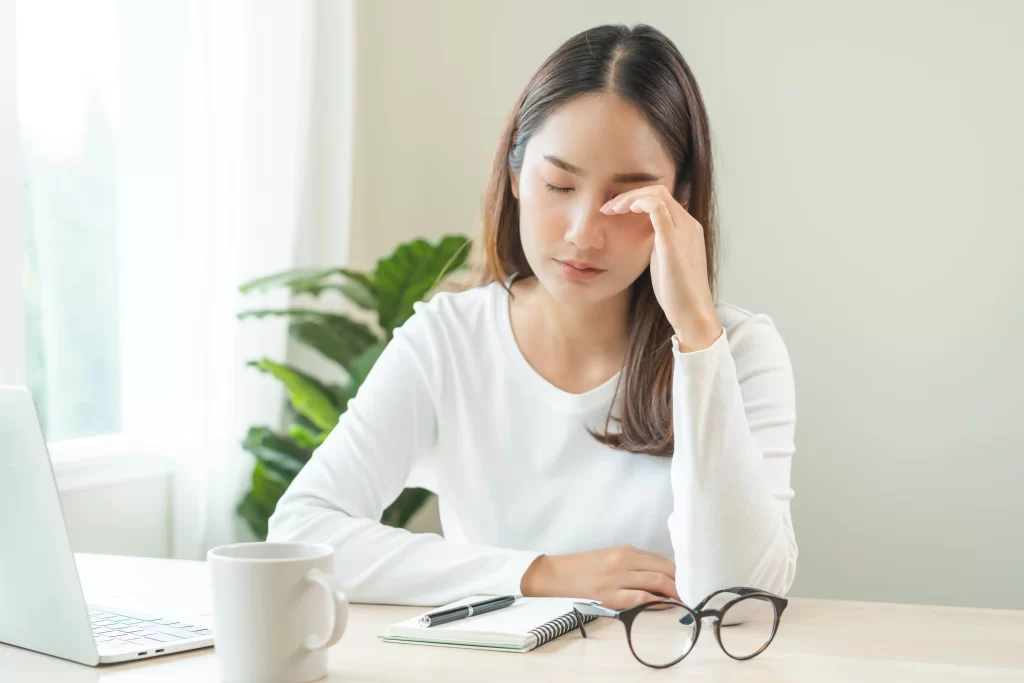
In our digital age, many of us find ourselves glued to screens for hours on end—whether working on a computer, scrolling through a tablet or catching up on our smartphones. This constant exposure can lead to a familiar yet frustrating sensation: tired, strained eyes.
Read on to know what you can do about strained eyes and what treatments you can consider.
Spending extended periods on digital devices can result in a condition known as digital eye strain, also referred to as computer vision syndrome. Your eye muscles, blinking patterns, and even light exposure change significantly when you’re glued to a screen.
When we stare at screens, we tend to blink less often. Blinking helps keep the eyes lubricated and healthy. With fewer blinks, the eyes become dry, irritated, and strained.
This constant strain can cause the muscles around your eyes to feel fatigued, leading to heaviness or even mild twitching.
Your eyes are constantly adjusting their focus when you look at a screen. The closer the screen, the harder your eyes have to work. Over hours, this can lead to a form of muscle fatigue; your eyes may feel sore, blurry, or heavy, especially at the end of the day.
The longer this continues, the more pronounced the symptoms become—discomfort intensifies, and visible signs of eye fatigue start to emerge.
The skin surrounding your eyes, already the thinnest and most delicate on the face, is especially vulnerable to the effects of prolonged stress and strain. Here’s how tired eyes show up on skin.
To manage your screen time and reduce how tired your eyes feel, you can practise these tips.
One of the simplest ways to lessen digital eye strain is to practise the 20-20-20 rule: Every 20 minutes, look at a distant object 20 feet away for 20 seconds. This relaxes your eye muscles and helps reduce focus fatigue.
Set reminders or use apps that prompt you to take regular visual breaks throughout the day.
Consciously blink when using screens. Blinking keeps your eyes lubricated and reduces irritation. You can also close your eyes for a few seconds every 30 minutes to relax the muscles.
If dryness persists, consider using preservative-free artificial tears to keep your eyes moist.
These small adjustments can help prevent strain and reduce the effects of blue light on your eyes and skin.
Your screen should be about an arm’s length away, with the top of the screen at or just below eye level. Looking slightly downward reduces the need for wide eye opening and blinking, which keeps your eyes more relaxed.
Ensure your workspace is well-lit to minimise glare and squinting.
If your eyes still look and feel tired despite lifestyle changes, you might want to consider professional aesthetic treatments.
Tired eyes are a reflection of your daily habits and a signal that your eyes (and the skin around them) need care. At DermClear Aesthetic & Laser Clinic, we understand how screen time and daily stressors can affect your skin and confidence. Our aesthetic doctor will assess your concerns and recommend a personalised treatment plan to help you look and feel refreshed.
If you’re ready to give your tired eyes the care they deserve, schedule a consultation with DermClear today.